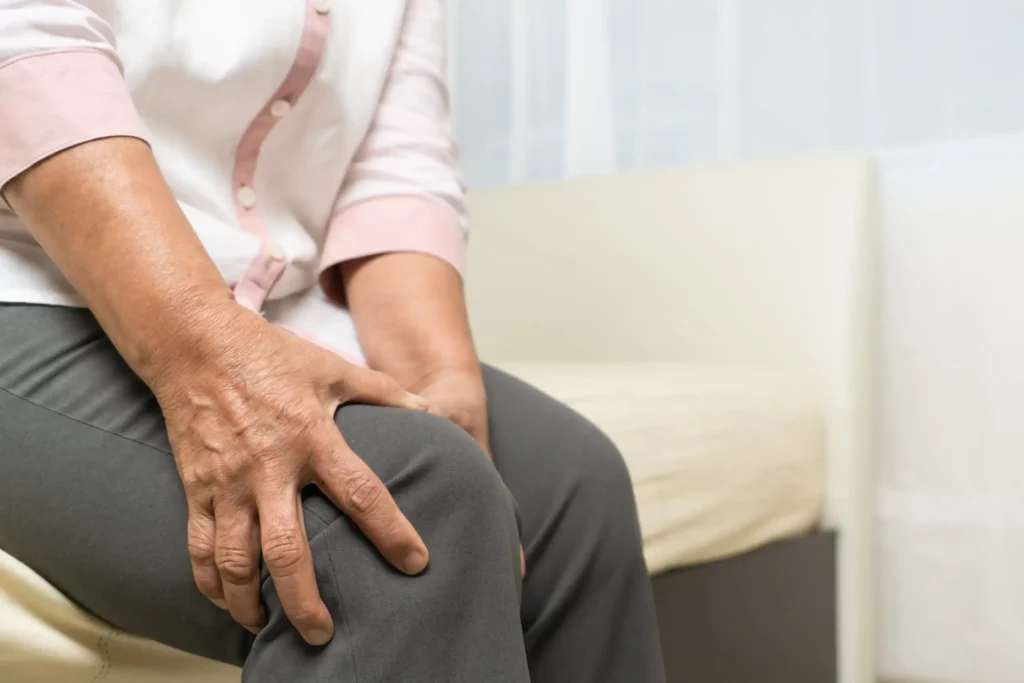Are you tired of joint pain showing up uninvited and making itself a regular part of your daily routine? Ready to wave goodbye to that discomfort? Let’s delve into the possible culprit behind this unwelcome guest – menopause. But fear not! We’re not just here to uncover the reasons behind menopausal joint pain; we’ll also provide you with practical solutions, including effective natural remedies to ease joint pain during menopause. So let’s dive in and say goodbye to joint pain!
Contents
Why Do My Joints Hurt During Menopause?
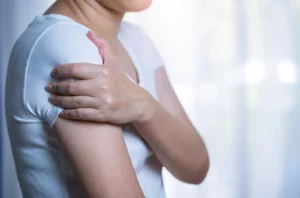 Menopause, a natural phase in a woman’s life, brings about a multitude of changes, and one often overlooked aspect is joint pain. Understanding why your joints might be aching during this time is crucial for effective management and relief. Let’s explore the factors contributing to the discomfort and gain insights into addressing menopausal joint pain.
Menopause, a natural phase in a woman’s life, brings about a multitude of changes, and one often overlooked aspect is joint pain. Understanding why your joints might be aching during this time is crucial for effective management and relief. Let’s explore the factors contributing to the discomfort and gain insights into addressing menopausal joint pain.
Hormonal Shifts:
The primary driver behind menopausal joint pain lies in the hormonal shifts that define this life stage. As estrogen levels decrease during menopause, the body undergoes profound changes. Estrogen, known for its anti-inflammatory properties, plays a vital role in maintaining joint health. The reduction in estrogen can lead to an increase in inflammatory responses, triggering joint pain, stiffness, and swelling.
Inflammatory Responses:
Menopause sets the stage for a rise in inflammatory markers within the body. This heightened inflammatory state contributes significantly to joint discomfort. Inflammation not only affects the synovium, the lining of the joints, but can also impact surrounding tissues, intensifying the pain experienced during movement.
The Interplay of Lifestyle and Joint Health:
Beyond hormonal fluctuations, lifestyle factors can exacerbate menopausal joint pain. Sedentary habits, poor dietary choices, and increased stress levels can amplify discomfort. Understanding how these factors intersect is pivotal in formulating holistic approaches to alleviate joint pain and enhance overall quality of life.
Osteoarthritis and Osteoporosis: Contributors Of Joint Pain During Menopause
Understanding menopausal joint pain requires a closer look at two prevalent musculoskeletal conditions—osteoarthritis and osteoporosis. These conditions often coincide with the hormonal changes of menopause, adding an additional layer to the joint discomfort experienced during this phase.
Osteoarthritis: Wear and Tear on the Joints
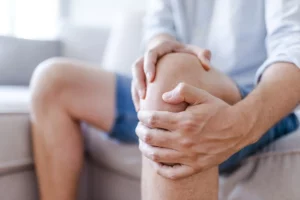 Definition: Osteoarthritis, commonly known as OA, is a degenerative joint disease characterized by the gradual breakdown of cartilage in the joints.
Definition: Osteoarthritis, commonly known as OA, is a degenerative joint disease characterized by the gradual breakdown of cartilage in the joints.
Connection to Menopause: The hormonal fluctuations in menopause can contribute to the progression of osteoarthritis. Estrogen, which has protective effects on cartilage, experiences a decline, potentially accelerating the wear and tear on joints.
Impact on Joint Pain: Osteoarthritis primarily affects weight-bearing joints such as the knees and hips. The degradation of cartilage leads to bone-on-bone contact, resulting in pain, stiffness, and reduced mobility.
Osteoporosis: Weakening of Bone Density
Definition: Osteoporosis is a condition marked by a reduction in bone density, making bones fragile and prone to fractures.
Connection to Menopause: The hormonal changes during menopause, particularly the decrease in estrogen, contribute to a decline in bone density. This makes women more susceptible to osteoporosis during and after menopause.
Impact on Joint Pain: While osteoporosis primarily affects bone density, it can indirectly contribute to joint pain. Fractures and bone weakening can lead to changes in joint function and increased discomfort.
Navigating menopausal joint pain becomes a multifaceted endeavor when osteoarthritis and osteoporosis are in the picture. Therefore, tailoring strategies to manage these conditions is crucial for comprehensive relief.
Natural Remedies For Joint Pain During Menopause
Exploring natural remedies for joint pain during menopause unveils two time-tested options that have been embraced in traditional medicine for centuries: herbs and adaptogens. These natural powerhouses offer holistic relief, addressing not just the symptoms but contributing to overall well-being.
Herbs for Joint Pain Relief
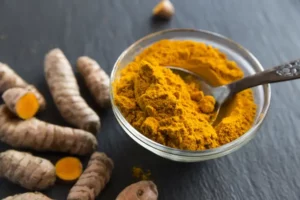
1. Turmeric: Contains curcumin, renowned for its anti-inflammatory properties, providing relief from joint pain and stiffness.
2. Ginger: Exhibits anti-inflammatory and analgesic effects, easing joint discomfort and enhancing overall joint function.
3. Boswellia: Known for its anti-inflammatory properties, boswellia can help reduce inflammation and alleviate joint pain.
4. Devil’s Claw: Has analgesic and anti-inflammatory effects, making it effective in relieving joint pain.
5. Rosemary: Contains anti-inflammatory compounds, aiding in the reduction of joint pain and swelling.
6. Bromelain: An enzyme found in pineapple, bromelain has anti-inflammatory effects, promoting joint health.
These herbs, when incorporated into your routine, can offer natural and effective relief for menopausal joint pain. Whether consumed as supplements or included in your meals, their holistic benefits contribute to overall joint well-being.
Adaptogens For Joint Pain Relief
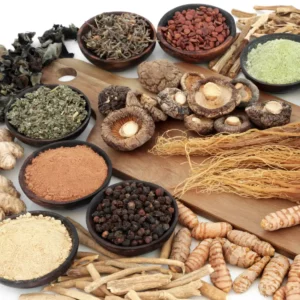 Adaptogens, derived from plants, are natural substances believed to provide support during times of stress and imbalance. Incorporating these adaptogenic herbs into your routine can be a game-changer for managing menopausal joint pain.
Adaptogens, derived from plants, are natural substances believed to provide support during times of stress and imbalance. Incorporating these adaptogenic herbs into your routine can be a game-changer for managing menopausal joint pain.
Popular Adaptogenic Herbs Include:
1. Ashwagandha: Known for its anti-inflammatory and stress-reducing properties, contributing to joint health.
2. Maca Root: Helps balance hormones and reduce inflammation, supporting overall joint well-being.
3. Ginkgo Biloba: Enhances blood circulation, which can contribute to joint health.
4. Reishi Mushrooms: Exhibits anti-inflammatory effects, potentially reducing joint pain and discomfort.
5. Astragalus Root Extract: Supports the immune system, promoting overall health during menopause.
6. Cordyceps Mushrooms: Known for anti-inflammatory and antioxidant properties, aiding in joint health.
7. Licorice Root Extract: Has anti-inflammatory and immune-modulating effects, supporting joint function.
8. Rhodiola Rosea Extract: Helps the body adapt to stress, potentially reducing stress-related joint pain.
9. Holy Basil: Exhibits anti-inflammatory and antioxidant properties, contributing to joint well-being.
Incorporating these adaptogens into your routine, whether through supplements or teas, can provide a natural and holistic approach to managing joint pain during menopause. Remember, it’s always advisable to consult with a healthcare professional before introducing new supplements into your regimen.
Some More Lifestyle Changes For Relief!
 While herbs and adaptogens play a crucial role in managing menopausal joint pain, incorporating certain lifestyle changes can amplify their effects and contribute to sustained relief. Let’s explore three impactful lifestyle adjustments that can make a significant difference:
While herbs and adaptogens play a crucial role in managing menopausal joint pain, incorporating certain lifestyle changes can amplify their effects and contribute to sustained relief. Let’s explore three impactful lifestyle adjustments that can make a significant difference:
1. Regular Exercise: Move Your Joints, Feel the Difference
What to Do:
- Low-Impact Cardio: Engage in activities like walking, swimming, or cycling to improve joint flexibility without straining.
- Strength Training: Incorporate gentle strength exercises to support joint stability and overall mobility.
- Stretching Routines: Embrace daily stretching to enhance joint flexibility and reduce stiffness.
Benefits:
- Increases blood flow, promoting nutrient delivery to joints.
- Strengthens muscles around joints, providing added support.
- Enhances flexibility, reducing the risk of joint stiffness.
2. Quit Smoking: A Joint-Friendly Decision
How to Quit:
- Seek Support: Join smoking cessation programs or consult with healthcare professionals for guidance.
- Identify Triggers: Recognize situations that prompt smoking and find alternative coping mechanisms.
- Gradual Reduction: Consider tapering off gradually to ease withdrawal symptoms.
Joint Health Impact:
- Smoking exacerbates inflammation, contributing to joint pain.
- Quitting smoking can improve blood flow, supporting joint health.
- Reduction in inflammation may alleviate joint discomfort.
3. Lose Weight: Lighten the Load on Your Joints
Weight Loss Strategies:
- Balanced Diet: Focus on a well-rounded, nutrient-dense diet.
- Portion Control: Be mindful of portion sizes to manage calorie intake.
- Regular Physical Activity: Combine a healthy diet with consistent exercise for effective weight management.
Joint Health Benefits:
- Reduces stress on weight-bearing joints, such as knees and hips.
- Improves overall joint function and mobility.
- Decreases inflammation associated with excess weight.
Incorporating these lifestyle changes alongside herbal remedies and adaptogens can create a holistic approach to managing menopausal joint pain. Remember, consistency is key, and consulting with healthcare professionals before making significant lifestyle changes is always advisable. Together, these adjustments pave the way for a more comfortable and active journey through menopause.
Food Items To Include For Joint Pain During Menopause

The saying “you are what you eat” holds particularly true when it comes to managing joint pain during menopause. Incorporating certain foods into your diet can play a pivotal role in promoting joint health and reducing discomfort. Let’s explore some nourishing options that can become your allies in the battle against menopausal joint pain:
Soybean: A Plant-Powered Protein
 Why Include It:
Why Include It:
- Rich in plant-based protein.
- Contains isoflavones with potential anti-inflammatory effects.
- May contribute to joint health and reduce inflammation.
How to Incorporate:
- Add tofu or edamame to salads and stir-fries.
- Include soy-based products in your daily meals.
Whole Grains: Fiber and Nutrients
Examples: Quinoa, Brown Rice, Whole Wheat
- Benefit: High in fiber and nutrients like selenium, aiding in weight management and reducing joint stress.
Fatty Fish: Omega-3s for Joint Support
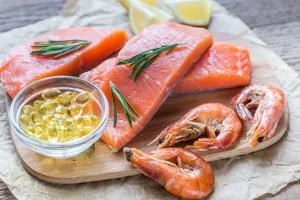 Why Include It:
Why Include It:
- High in omega-3 fatty acids, known for their anti-inflammatory properties.
- Supports joint flexibility and reduces inflammation.
- Common fatty fish include salmon, mackerel, and trout.
How to Incorporate:
- Grill or bake fatty fish for a delicious and joint-friendly meal.
- Consider fish oil supplements for an omega-3 boost.
Green Tea: Sip Your Way to Joint Comfort
Why Include It:
- Contains polyphenols with potential anti-inflammatory effects.
- Provides hydration without added sugars or calories.
- Can be a soothing addition to your routine.
How to Incorporate:
- Enjoy green tea as a beverage throughout the day.
- Experiment with different flavors and blends.
Fruits and Vegetables: Colorful Nutrient Powerhouses
 Why Include Them:
Why Include Them:
- Packed with antioxidants, vitamins, and minerals.
- Support overall health, including joint function.
- Variety is key for a diverse nutrient intake.
How to Incorporate:
- Aim for a rainbow of colors in your fruits and vegetables.
- Include berries, citrus fruits, leafy greens, and cruciferous vegetables.
Nuts and Seeds: Nutrient-Packed Snacks
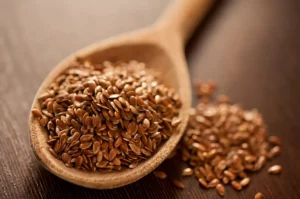
Examples: Walnuts, Flaxseeds, Chia Seeds
- Benefit: Provide omega-3 fatty acids and essential nutrients like magnesium and zinc, supporting joint health.
Remember, a balanced and varied diet is key for overall health, including joint health during menopause. While these food items can be beneficial, it’s essential to consult with healthcare professionals for personalized dietary advice. Together, a nourishing diet and other lifestyle adjustments can contribute to a more comfortable and vibrant menopausal journey.
Conclusion
In conclusion, managing joint pain during menopause requires a multifaceted approach, and embracing natural remedies, making lifestyle adjustments, and seeking professional guidance can collectively contribute to improved joint health.
If you are facing menopause related issues, menopause treatment at HerMantra can help. Book your free trial online menopause treatment session now.
